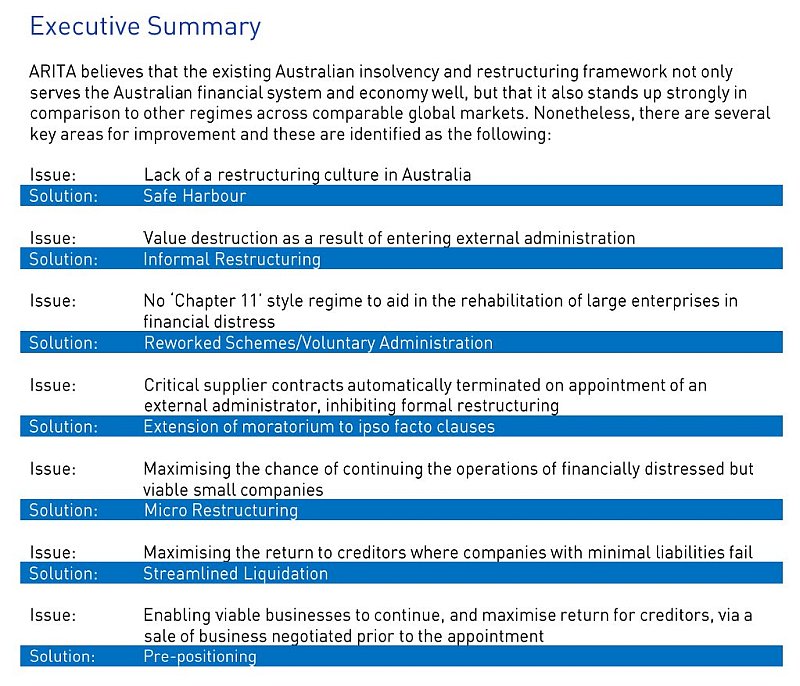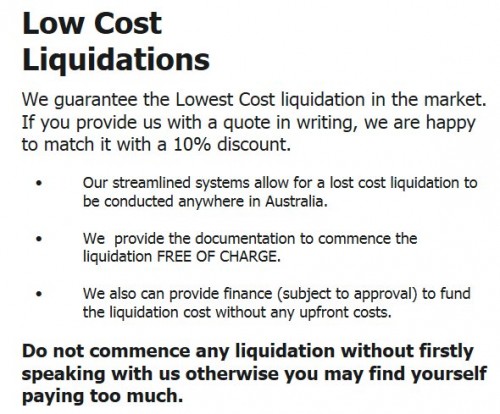The corporate regulator may not care much about it but liquidators do, and they want some changes made.
The Report as to Affairs (RATA) is a form which is prepared for the purpose of showing the financial position of a company at commencement of its entry into liquidation, controllership or administration.
Between November 2011 and March 2012, and with support from a scholarship administered by the Insolvency Practitioners Association of Australia (IPA), I carried out extensive research into the RATA, including a random survey of 105 official liquidators.
My research paper is now available from the IPA or from the Centre for Corporate Law and Securities Regulation.
Titled “An Appraisal of the Report as to Affairs”, the paper is a report on the written survey of official liquidators concerning the Report as to Affairs form and associated compliance issues. The report also examines the history and purpose of the Report as to Affairs, laws which impose duties to submit the form, and ideas for change.
The paper concludes with several recommendations and observations, including the following:
“This survey of liquidators has brought to light substantial criticisms and concerns about the RATA and a desire for change. It coincides with moves towards harmonisation of personal and corporate insolvency regulation, and with the start of the Personal Property Securities Act, which makes significant changes to priority rules for secured parties as well as introducing a new vocabulary. All this suggests that it’s time the RATA form was revisited and overhauled. The ASIC should make the RATA the subject of an inquiry through a Consultative Paper …. The ultimate aims of the consultation would be to produce a new or redesigned form, a Regulatory Guide to the form, and an information sheet for directors. The inquiry should consider, for example, what constitutes an acceptable standard for a RATA – i.e., when does a professed RATA qualify as a valid RATA – and how the receipt of a RATA that fails to meet that standard should be handled.”
Appended to the main research report is a supplement which reproduces verbatim all the ideas, suggestions and comments made by liquidators concerning what is wrong with the present RATA and how it could be improved.
Thanks to Professor Ian Ramsay, of Melbourne University, who is Director of the Centre for Corporate Law and Securities Regulation, the full research paper appears in SAI Global Corporate Law Bulletin No. 178. A copy of the paper (including the annexures) is available as one pdf file from http://cclsr.law.unimelb.edu.au/files/The_RATA_-_research_paper_-_Keenan_-_2012_-_IPA_TTS.pdf
A shortened version of the paper appears in the latest edition of the Australian Insolvency Journal , which is published by the IPA (see Volume 24 Number 2, pages 10 to 23). The link to that version is http://www.ipaa.com.au/default.asp?menuid=319&artid=1157
I am indebted to Michael Murray, Legal Director of the IPA, who vetted the research paper and edited the version that appears in the Australian Insolvency Journal. It was as a result of his enthusiasm and status in insolvency law circles that Professor Ian Ramsay took an interest in the paper and had it published by the Centre for Corporate Law and Securities Regulation. Michael has also forwarded the paper to the ASIC, ITSA and relevant government departments.
![]() On 1 October 2018 the Australian Securities and Investments Commission (ASIC) released a draft of a new Report as to Affairs (commonly known as a RATA). A copy of this form, which includes detailed instructions, may be downloaded from my website or from this ASIC journal.
On 1 October 2018 the Australian Securities and Investments Commission (ASIC) released a draft of a new Report as to Affairs (commonly known as a RATA). A copy of this form, which includes detailed instructions, may be downloaded from my website or from this ASIC journal.












